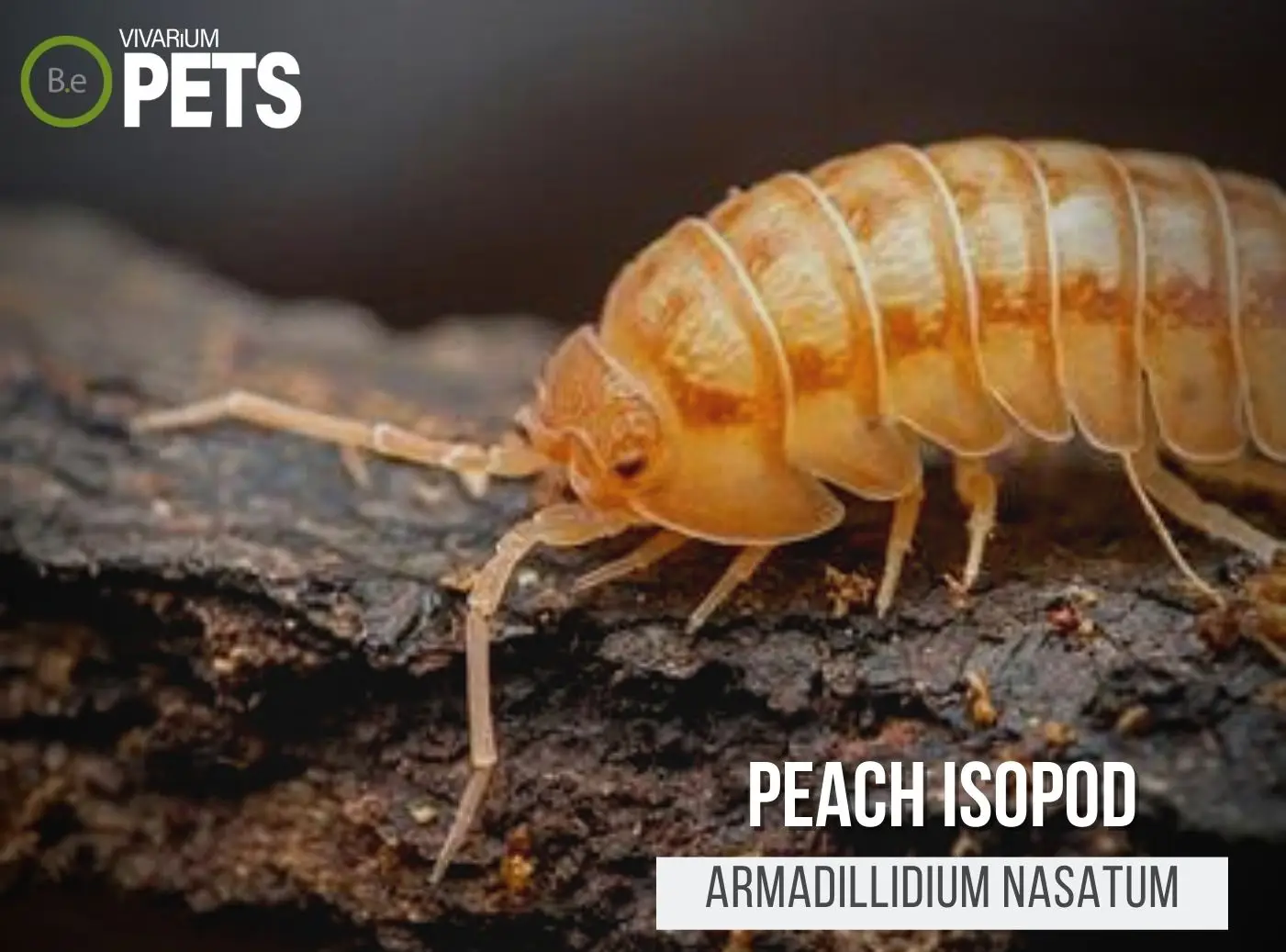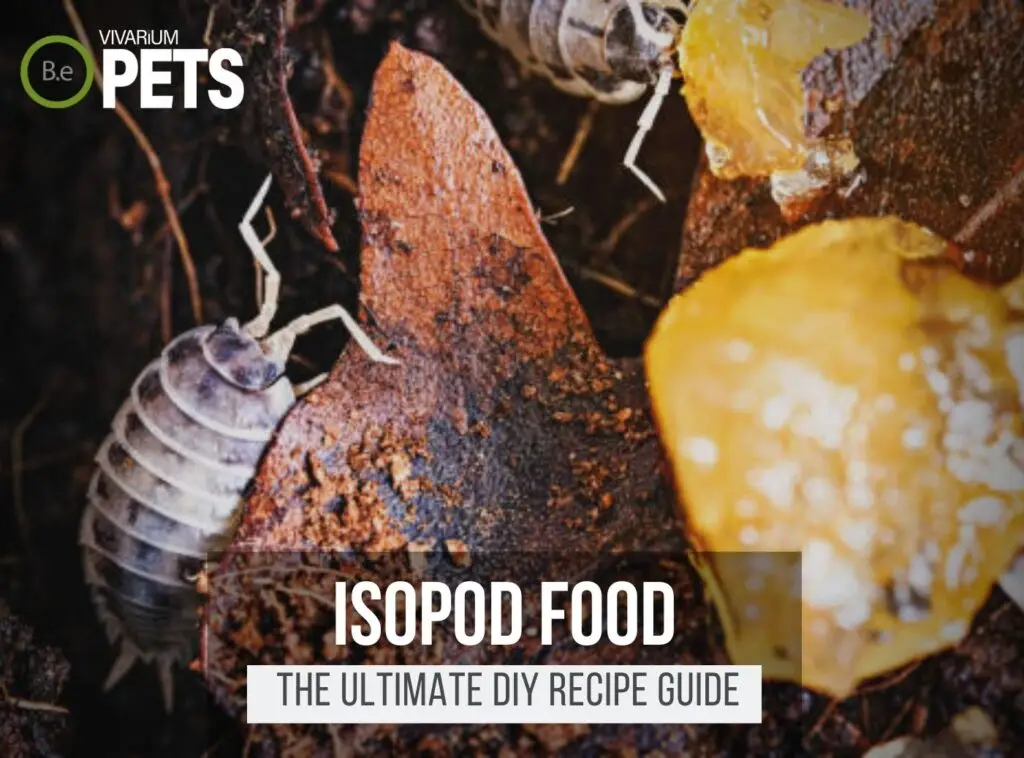If you’re looking to add a unique and exotic pet to your family, then our unusual and fascinating friends the Armadillidium Isopods may be just what you’re looking for!
Whether you already have experience with these hardy invertebrates or are brand new to the adventure of keeping one…
Our guide will provide you with all the necessary information you need to understand and purchase your own Armadillidium Isopod.
From initial setup to interesting FAQs and fun facts, this complete guide will equip you with the knowledge to confidently handle the unique Armadillidium species.
So let’s get to it—read on to learn all about Armadillos of crustaceans and what you should know before you buy one!
Table Of Contents:
ToggleWhat Are Armadillidium Isopods?
Armadillidium Isopods are a genus of terrestrial crustaceans under the family Armadillididae. They are commonly referred to as Pill Bugs, Rollie Pollies, and Pill Woodlouse.
They are widely found and distributed across the world and come in many different color variations.
The most distinctive characteristic of these invertebrates is their ability to curl into a ball, a trait unique to this genus.
They are quite reclusive and thrive in dark, damp locations such as under leaves, logs, and soil.


Benefits Of Armadillidium Isopods
The benefits of having Armadillidium sp. in your vivarium are numerous.
These amazing creatures are not only fun and interesting to observe, but they also provide a number of important services in a bioactive terrarium.
On the one hand, they feed on decaying organic matter, helping to break down and detoxify the terrarium’s soil.
On the other hand, they serve as a natural food source for amphibians and reptiles that may also live in the enclosure, both directly and indirectly.
As a result, not only do Armadillidium Isopods help to keep your tank clean but also provide an interesting and interactive addition to your reptile enclosure.
Best Types Of Armadillidium Isopods
Pill Bug (Armadillidium vulgare)
Armadillidium vulgare is the most common pill buy found in backgrounds throughout the world. Many gardeners see these shy creatures as pests.
They are the absolute easiest to care for as well as breed making them the ideal isopod to start out with for beginner hobbyists.
If you’re looking for more specifics on this isopod, here’s a full care guide on Pill Bug (Armadillidium vulgare).
Magic Potion Isopods (Armadillidium vulgare ‘Magic Potion’)
Magic Potion Isopods are the lighter mutation of the classic Rollie Pollie we just covered. These unique birthday cake variations are native to Japan so you won’t find too many of these under a rock if you’re in the states like me.
The care requirements for these are going to be very similar to their darker relatives, but breeding them will require ideal tank conditions.
If you’re looking for more specifics on this isopod, here’s a full care guide on Magic Potion Isopods (Armadillidium vulgare ‘Magic Potion’).
Peach Isopods (Armadillidium nasatum)
Peach Isopods are still within the Armadillidium genus but the species is different. This will mean what these curious critters are accustomed to will be slightly variated compared to the prior pill bugs.
This mutation of Armadillidium sp. has a bright peachy color and is known to be a bit more vibrant personality-wise.
If you’re looking for more specifics on this isopod, here’s a full care guide on Peach Isopods (Armadillidium nasatum).
Zebra Isopods (Armadillidium maculatum)
Zebra Isopods are a unique species of Armadillidium isopod with a distinct, zebra-like pattern. As the name implies, they have black and white stripes that run the full length of their body.
They are native to France and are relatively easy to care for, making them an excellent choice for beginner hobbyists.
Zebra Isopods are also known to be active and hardy, so they are a great choice for someone who wants to observe more movement in their tank.
If you’re looking for more specifics on this isopod, here’s a full care guide on Zebra Isopods (Armadillidium maculatum).
High Yellow Spotted Isopods (Armadillidium gestroi)
High Yellow Spotted Isopods, or Armadillidium gestroi, are a popular species in the isopod pet trade.
They are a bit more active than their cousins, so hobbyists should keep an eye out for them running around the tank or climbing walls.
They are very easy to care for and a great choice for beginner hobbyists. Breeding this species is also relatively easy, however, they require slightly higher humidity than other species.
If you’re looking for more specifics on this isopod, here’s a full care guide on High Yellow Spotted Isopods (Armadillidium gestroi).
Clown Isopods (Armadillidium klugii)
Clown Isopods are a bright and colorful species of isopods that are native to parts of Europe. They are a very popular choice for hobbyists who are looking for something a bit more exotic than the classic Rollie Pollie.
Clown Isopods require a bit more care than their darker relatives but are still relatively easy to care for. They can be a bit more finicky when it comes to breeding, so proper tank conditions are a must.
If you’re looking for more specifics on this isopod, here’s a full care guide on Clown Isopods (Armadillidium klugii).
Yellow Spanish Isopod (Armadillidium granulatum)
The Yellow Spanish Isopod is a species of isopod that is native to Spain and can be found in other parts of Europe. They are easily recognizable due to their yellow coloration and unique patterning.
They are a bit more active than other species of isopods and enjoy exploring their environment. Breeding these isopods can be a bit tricky, so they are best suited for experienced hobbyists.
If you’re looking for more specifics on this isopod, here’s a full care guide on Yellow Spanish Isopod (Armadillidium granulatum).
Armadillidium Isopods For Sale
Finding Armadillidium Isopods for sale isn’t an impossible task. You can find them from many pet stores, or look for a reputable breeder online. Common species can often be found right in your own backyard!
Your best bet is to consult with experts before making a purchase or scavenging for some. Experts can help ensure you get the right Armadillidium sp. for your needs.
With the right information and a little bit of research, you can be sure that your Armadillidium Isopod will be a perfect fit.
Armadillidium Isopod Care
Terrariums provide a safe and inviting home for Armadillidium Isopods.
The setup should have plenty of hiding places, such as logs, dried leaves, and decorations, for these nocturnal creatures to rest in during the day.
They need an appropriate terrarium substrate that is deep enough for them to burrow, and humid conditions, as they come from a tropical climate.
A shallow water bowl should be included for moisture and additional water. Add something for them to climb on, such as small rocks or pieces of bark.
Lastly, appropriate temperatures must be maintained; typically between 18–25 degrees Celsius.
With the correct vivarium setup, you’re sure to have a comfortable and welcoming habitat for your Armadillidium comrades.
Feeding Armadillidium Isopods
Feeding Armadillidium Isopods is relatively easy and straightforward since they are detritivores. The main sources of their food appear to be plants, fruits, vegetables, and other decaying organic matter.
They should be fed small portions of food on a regular basis, and it should always be fresh. Here is a list of foods that you can feed your Armadillidium critters:
- Dried fruits (e.g. raisins)
- Fruits and vegetables (e.g. bananas, strawberries, bell peppers)
- Fish food pellets
- Worm castings
If you’re more of an avid hobbyist like myself, be sure to check out my ultimate DIY Isopod food guide. I give a more in-depth explanation of the best foods and my personal favorite recipe.
Conclusion
Congratulations! Now that you know the basics of Armadillidium Isopods, it’s time to find one of your own.
With this guide and the tips provided, you are ready to enter the world of Pill Bugs and maintain a happy and healthy home for your new critter companion.
Your Pet Isopod will be a wonderful addition to your family, and with the knowledge you’ve acquired, you can make sure your pet is kept in the best possible conditions.
Frequently Asked Questions
No, a roly–poly is not a cockroach. A roly–poly is a type of isopod.
Yes, rolly pollies make great pets as they are easy to care for and interactive.
Armadillidiidae is a family of terrestrial isopod crustaceans commonly known as pill bugs, rollie pollies, or woodlice.
No, not all isopods are pill bugs. Pill bugs are a specific species of isopod, also known as Armadillidium sp. Other types of isopods include shrimp, crabs, and sowbugs.
Common names for Armadillidiidae include pill bugs, pill woodlice, and roly–polies.
No, Rolly Pollies are not venomous. They are small, harmless creatures that are often found in gardens and are harmless to humans.
Roly–poly bugs, also known as pill bugs or sowbugs, belong to the species Armadillidium sp.
Yes, Rolly Pollies are generally friendly. They are not known to bite or sting and can be held in the hand if you are gentle with them.









